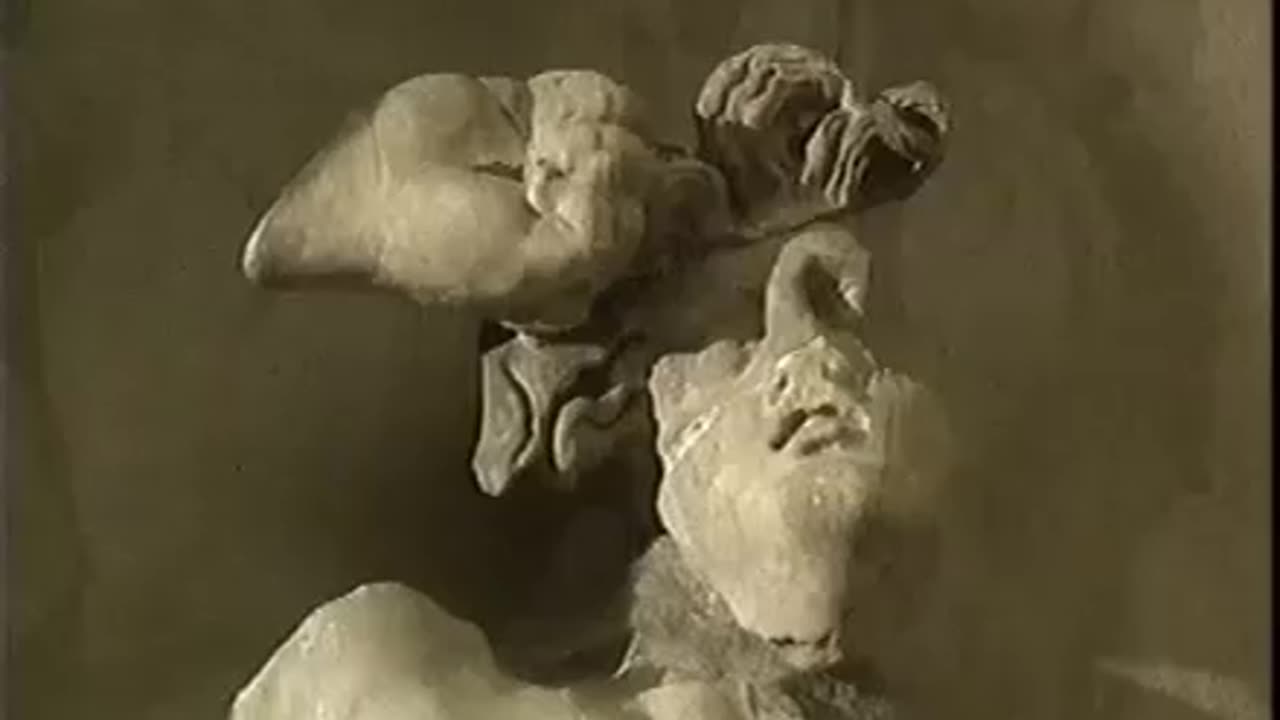Premium Only Content

The Pergamon Altar
The Pergamon Altar was a monumental construction built during the reign of the Ancient Greek King Eumenes II in the first half of the 2nd century BC on one of the terraces of the acropolis of Pergamon in Asia Minor.
The structure was 35.64 metres (116' 31/32") wide and 33.4 metres (109' 6 5/8") deep; the front stairway alone was almost 20 metres (65' 11/16") wide. The base was decorated with a frieze in high relief showing the battle between the Giants and the Olympian gods known as the Gigantomachy. There was a second, smaller and less well-preserved high relief frieze on the inner court walls which surrounded the actual fire altar on the upper level of the structure at the top of the stairs. In a set of consecutive scenes, it depicts events from the life of Telephus, legendary founder of the city of Pergamon and son of the hero Heracles and Auge, one of Tegean king Aleus's daughters.
In 1878, the German engineer Carl Humann started official excavations on the acropolis of Pergamon, an effort that lasted until 1886. The relief panels from the Pergamon Altar were subsequently transferred to Berlin, where they were placed on display in the Pergamon Museum.
-
 15:48
15:48
IsaacButterfield
1 day ago $0.93 earnedWoke Lunatic ATTACKS My 2 Year Old Son!!
6.03K17 -
 55:00
55:00
The Hannah Faulkner Show
20 hours ago $0.67 earnedKLAUS SCHWAB RESIGNS & A NEW POPE with Mike Crispi | The Hannah Faulkner Show
4.42K4 -
 36:50
36:50
Uncommon Sense In Current Times
12 hours ago $0.26 earnedHomicide Detective Finds God While Investigating True Crime | J. Warner Wallace
6.26K10 -
 1:00:51
1:00:51
Trumpet Daily
20 hours ago $3.24 earnedAmerica’s Shameful Foreign Policy - Trumpet Daily | Apr. 24, 2025
6.85K9 -
 17:18
17:18
VSOGunChannel
15 hours ago $0.37 earnedDNT HYDRA- A Thermal Sight You Can Actually Afford
5.74K4 -
 10:10
10:10
Mrgunsngear
13 hours ago $7.20 earnedNew Trijicon MRO SD - The Best American Made Red Dot Optic?
44.5K11 -
 13:42
13:42
SantaSurfing
16 hours ago4/24/2025 - Part 1 on Endless Frontiers Efficient & Powerful Tesla Homes! Revolutionary!
62.1K54 -
 12:19
12:19
T-SPLY
18 hours agoDemocrats Start Economic War With El Salvador!
48.5K38 -
 3:14:44
3:14:44
TimcastIRL
12 hours agoDemocrat RAIDED After He's CAUGHT Harboring TERRORIST TdA Member, Wife ARRESTED
237K203 -
 2:42:29
2:42:29
RiftTV/Slightly Offensive
12 hours ago $26.00 earnedBabylon Bee Mocks Christianity in Con Inc War on "Christ is King" | Guest: Pastor Joel Webbon
91.7K86